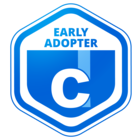Evening.
To get us where we are today, I had to go through a vendor review to show due diligence to a group of executives that were going to be tasked with a purchase decision. I walked key features with each vendor, watched and listened carefully…and acted as a primary vetting agent of the experience. And a whole category was dedicated to reporting. What I found strikingly odd was seeing a concept missed. 3 of the 4 products bypass an opportunity that may seem weird if you have never seen an LMS do it, but when it works? Not only is it elegant? But then people get what learning management really is at its core. The idea is having a group-centric “report” get reported on for its completions in a pull scenario where people are not mapped (subscribed) to a learning object.
Here is the scenario:
- Put a course into a catalog that is visible to everyone allowing for a “pull” by learners to happen
- People begin pulling it
- You get a request to run a report to see who has and who has not attempted, who has started a course, and who has completed it from a list of people
- You load the group
- You run a group centric report for the course
- on running, you find that the not attempted are not shown in the report
Now where that scenario is rather elementary to solve on paper (because you will have three elements you are after - completions and subscribed and/or those in progress) that does mean you need to go to spreadsheets to generate who has not attempted. Doesn’t something seem weird or (I would go as far as saying something) is wrong with needing to potentially rub a demographics list against your completion report IF you specified to the system who the report should already be on?
And please don’t tell me - “well now that you have census file fed into the system you could map people to the learning object to get your desired result”…that’s too many steps…the system should be able to report on all of “statuses” mentioned above - with “not attempted” coming along as a status.
Anywho…..I am curious of your thoughts.




